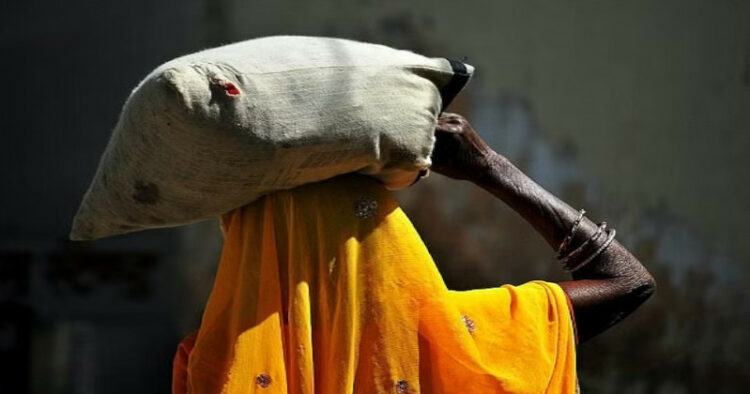Assam has registered a significant decline of 13.30 percentage points in the number of multi-dimensional poverty, from 32.65 per cent in 2015-16 to 19.35 per cent in 2019-2021. About 46.87 lakh people have escaped multi-dimensional poverty in Assam.
The report ‘National Multidimensional Poverty Index: A Progress Review 2023’ was released on July 17, by the Government think tank’s Vice-Chairman Suman Bery, in the presence of Members of NITI Aayog VK Paul and Arvind Virmani, and BVR Subrahmanyam, CEO NITI Aayog.
As per the report released, the rural areas of the state witnessed a remarkable decline in poverty from 36.14 per cent to 21.41 per cent and in the urban area it declined from 9.94 per cent to 6.88 per cent.
According to data shared by the Chief Minister’s Office, the Hailakandi district has registered a decline in multi-dimensional poverty from 51.07 per cent to 36.22 per cent, Karimganj district witnessed a decline from 46.02 per cent to 32.93 per cent, from 42.29 per cent to 30.58 per cent in Cachar district, from 51.06 per cent to 26.02 per cent in Dhubri district, from 38.22 per cent to 23.65 per cent in Darrang district, from 36.75 per cent to 22.46 per cent in Morigaon district, from 30.51 per cent to 20.84 per cent in Nagaon district, from 29.46 per cent to 19.16 per cent in Udalguri district, from 25.32 per cent to 19.94 per cent in Sonitpur district.
It declined from 39.41 per cent to 19.12 per cent in Barpeta district, from 32.14 per cent to 18.92 per cent in Kokrajhar district, from 40.15 per cent to 18.34 per cent in Goalpara district, 36.70 per cent to 17.66 per cent in Tinsukia district, 33.77 per cent to 17.39 per cent in Bongaigaon district, 36.20 per cent to 16.79 per cent in Chirang district, 37.59 per cent to 16.20 per cent in Karbi Anglong district, from 23.59 per cent to 15.60 per cent in Baksa district, from 20.60 per cent to 14.60 per cent in Golaghat district, from 24.23 per cent to 14.06 per cent in Lakhimpur district.
Similarly, the Dhemaji district has witnessed a decline from 27.71 per cent to 13.73 per cent, from 31.07 per cent to 13.62 per cent in Dima Hasao district, from 26.22 per cent to 12.71 per cent in Kamrup district, from 28.97 per cent to 12.26 per cent in Dibrugarh, from 20.24 per cent to 11.49 per cent in Jorhat, from 16.94 per cent to 11.24 per cent in Nalbari, from 25.55 per cent to 10.28 per cent in Kamrup (Metro), from10.93 per cent to 5.63 per cent in Sivasagar district.
The Chief Minister’s Office said the state came out as the seventh best among all Indian states.
Overall, as many as 13.5 crore individuals in India moved out of multidimensional poverty between 2015-16 and 2019-21, according to the NITI Aayog report. The Multidimensional Poverty Index (MPI) measures simultaneous deprivations across the three dimensions of health and nutrition, education, and standard of living.
The report prepared based on the latest National Family Health Survey (NFHS-5) 2019-21, according to Niti Aayog, represents India’s progress in reducing multidimensional poverty between the two surveys, NFHS-4 (2015-16) and NFHS-5 (2019-21).
According to the Report, India has registered a significant decline of 9.89 percentage points in a number of India’s multidimensionally poor from 24.85 per cent in 2015-16 to 14.96 per cent in 2019-2021.
Notably, the report said the rural areas witnessed the fastest decline in poverty from 32.59 per cent to 19.28 per cent. During the same period, the urban areas saw a reduction in poverty from 8.65 per cent to 5.27 per cent. Uttar Pradesh registered the largest decline in the number of poor with 3.43 crore people escaping multidimensional poverty.
Providing multidimensional poverty estimates for the 36 States and Union Territories and 707 Administrative Districts, the Report stated that the fastest reduction in the proportion of multidimensional poor was observed in Uttar Pradesh, Bihar, Madhya Pradesh, Odisha, and Rajasthan.





















Comments